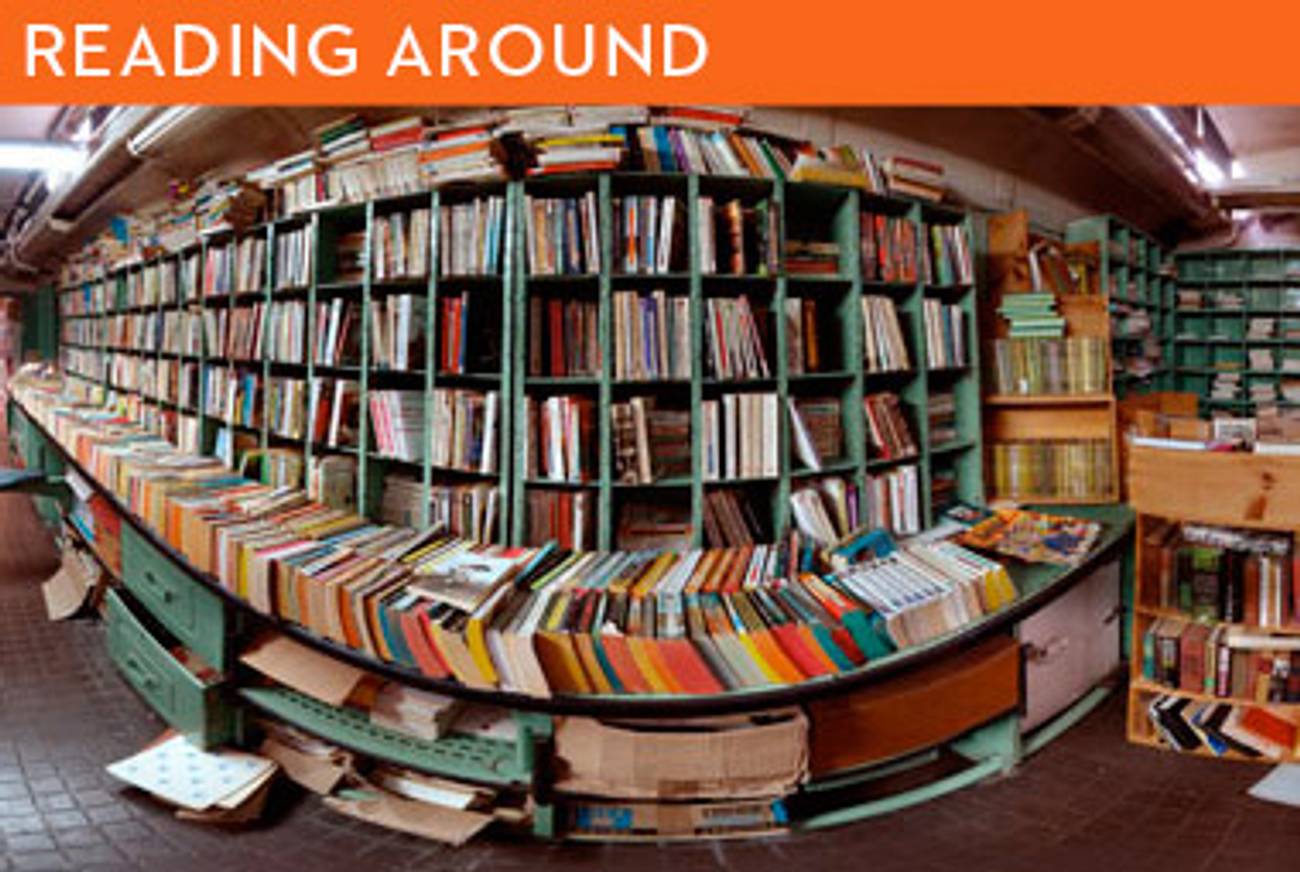On the Bookshelf
Yiddish is far from dead. It’s undead, and it haunts everything from Harvey Pekar’s comics to the vampire literature of the early 20th century.




Yiddish isn’t dead; if anything, it’s undead. Think about it: Is there anything more unkillable, vaguely erotic, ridiculous, and toothy than the language of the Ashkenazim? In fact, a book published this spring—Sara Libby Robinson’s Blood Will Tell: Vampires as Political Metaphors Before World War I(Academic Studies, March)—argues that Bram Stoker’s Dracula, the single most recognizable undead gentleman in history, was, as Allan Nadler phrases it, a reflection of “widespread anxieties about the dangers posed by the flood (and the blood) of Yiddish-speaking immigrants to Great Britain.”
***
Like Dracula, Yiddish may be a little pale (and allergic to crucifixes), but it’s not going anywhere: Witness Lily Kahn’s Colloquial Yiddish (Routledge, August). “Colloquial,” mind you, meaning: everyday, casual, informal, the kind of Yiddish you speak with your friends when you’re just hanging out at the mall. The book, by a University College London Ph.D. and language instructor, can be purchased with audio accompaniment on CD (talk about something that’s dead) or, more sensibly for the century we live in, as an MP3 download.
***
This spring also saw what seems to have been the first volume of Yiddish poetry to have been funded on Kickstarter: Zackary Sholem Berger’s bilingual זאָג כאָטש להבֿדיל /Not in the Same Breath (Yiddish House, May), a varied, clever collection that works equally well for those poor souls who speak only English as it does for yidish-reders. Berger, whose previous projects include translations of The Cat in the Hat and Curious George into Yiddish, knows a thing or two about breath: In his other, equally impressive career, as a doctor and medical researcher at Johns Hopkins, one of his published articles concerns the “Prevalence of workplace exacerbation of asthma symptoms in an urban working population of asthmatics.”
***
Even the Yiddish literary classics—a wonderful selection of which, edited by Ken Frieden, is now available as a paperback:Classic Yiddish Stories of S. Y. Abramovitsh, Sholem Aleichem, and I. L. Peretz (Syracuse, September)—remain vigorous and open to new readings. Marc Caplan’s How Strange the Change: Language, Temporality, and Narrative Form in Peripheral Modernisms (Stanford, September), for instance, demonstrates how European Yiddish literary texts by authors including Yisroel Aksenfeld, Isaac Meyer Dik, and Y. Y. Linetski resonate with and complement African English and French ones by the likes of Amos Tutuola, Cheikh Hamidou Kane, Camara Laye, and Ahmadou Karouma. The comparison isn’t random: All these literatures were written by people with rich oral storytelling traditions who were subject to the whims of imperial regimes.
***
That even the most familiar brands of Yiddish—American, leftist, World of Our Fathers-ish—can be newly animated is the message of Harvey Pekar and Paul Buhle’s Yiddishkeit: Jewish Vernacular and the New Land(Abrams, September), which renders chestnuts of Yiddish cultural history—Paul Robeson’s hotel room encounter with Itzik Feffer in Soviet Moscow; the controversy regarding Sholem Asch’s novels about Christ—in underground comix form. Among the book’s other contents are gorgeous comix-style portraits of Yiddish writers by Dan Archer and the full text, with occasional illustrations, of “The Essence: A Yiddish Theater Dim Sum.” It says something—it’s not clear what—that Pekar’s last project was a love letter to his mother tongue.
***
Yiddishkeit (vaguely: Jewishness) comes in a variety of forms, not just the socialist/Communist ones that Buhle (if not Pekar) heavily favors. An example of how Yiddish functioned in one American childhood appears in Lucky Bruce: A Literary Memoir(Biblioasis, September), by the novelist, screenwriter, and raconteur Bruce Jay Friedman. “My father hit me just once,” Friedman recalls, “which is not a bad score for a Depression boy. The blow was sudden, unexpected. It knocked me halfway across the street. I’d used a slang word, putz, though I had no idea it meant penis.”
***
There is a danger, of course, of overemphasizing Yiddish to the exclusion of other languages spoken by Jewish communities; German-speaking Jews, for one example, tend not to be sufficiently recognized for their lasting contributions to American Jewish life. Attending to one of their achievements, Cornelia Wilhelm’s The Independent Orders of B’nai B’rith and True Sisters: Pioneers of a New Jewish Identity, 1843-1914(Wayne State, July) examines how a German-Jewish fraternity founded in the middle of the 19th century anticipated and addressed many of the challenges that modern Jews have faced since then.
***
Or, for another case of a neglected language, take the dialect of the Jews of Northwest Persia, which “bears a close resemblance to that of the Urmi Syrians,” according to Arthur John Maclean’s 1895 handbook, now available as a print-on-demand title from Cambridge University Press (or, more sensibly, free from Google Books), called Grammar of the Dialects of the Vernacular Syriac (Cambridge, June). To illustrate the similarity, Maclean excerpts an Odessan’s translation of a couple of the Psalms into the Judeo-Azerbaijani vernacular. Where’s the indie comix anthology about that?
Josh Lambert (@joshnlambert), a Tablet Magazine contributing editor and comedy columnist, is the academic director of the Yiddish Book Center, Visiting Assistant Professor of English at the University of Massachusetts, Amherst, and author most recently of Unclean Lips: Obscenity, Jews, and American Culture.
Josh Lambert (@joshnlambert), a Tablet Magazine contributing editor and comedy columnist, is the academic director of the Yiddish Book Center, Visiting Assistant Professor of English at the University of Massachusetts, Amherst, and author most recently ofUnclean Lips: Obscenity, Jews, and American Culture.